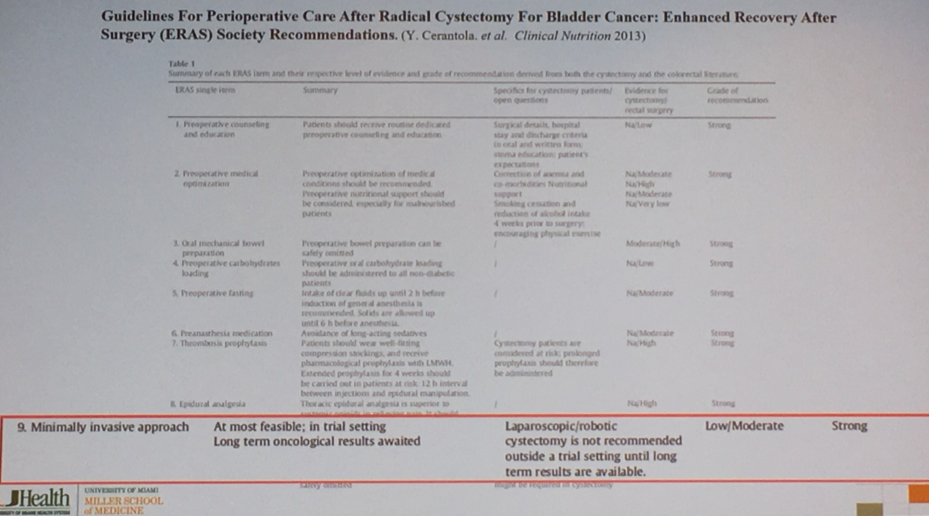He began by highlighting the complexity of many ERAS protocols which may include between 27 and 34 unique, individual items.

Further, according to the ERAS strategy as described by Ljungqvist et al., minimally invasive surgery (such as robotic-assisted radical cystectomy) forms a key component of ERAS approaches.

Further, the inclusion of minimally invasive approaches is included in radical cystectomy specific ERAS protocols.

He then quickly highlighted differences in perioperative outcomes from retrospective analyses:

Before moving on to evidence derived from randomized controlled trials including Bochner et al., Nix et al., and Parekh et al. In each case, there was a benefit in estimated blood loss, hospital length of stay, and time to bowel recovery to robotic assisted radical cystectomy. He focused on the evidence derived from the RAZOR clinical trial. This multicenter trial demonstrated comparable progression-free survival between open and robotic approaches with decreased blood loss, decreased transfusion rates, and shorter hospital length of stay among patients who received robotic radical cystectomy.
He then went on to highlight the complexity, relatively lower quality of evidence, and lack of demonstrable benefit to ERAS in the published literature.


While many ERAS protocols recommend a restrictive fluid strategy, Dr. Parekh highlighted recent evidence that such an approach may increase risks of surgical site infection and acute kidney injury.

Additionally, while the increased costs of robotic surgery are relatively transparent, Dr. Parekh highlighted the potentially hidden costs of ERAS including pharmacy costs, increased home visits and nursing case, and increased outpatient care visits. These costs may increase as ERAS utilization increases as demonstrated below:

Presented by: Dipen Parekh, MD, Urologic Oncology, University of Miami Health System, Miami, Florida
Written by: Christopher J.D. Wallis, Urology Resident, University of Toronto, Contact: @WallisCJD on Twitter at the American Urological Association's 2019 Annual Meeting (AUA 2019), May 3 – 6, 2019 in Chicago, Illinois
Further Related Content:
ERAS vs. Robotics: Which Provides the Most Incremental Benefit? - ERAS


